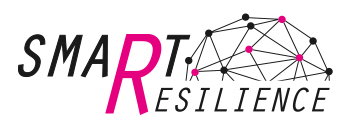
The content of the course has been developed within research done in the EU funded project - SmartResilience (Grant Agreement no. 700621) and it's part of the SmartResilience e-learning platform (http://www.smartresilience.eu-vri.eu/sotp/)
This course provides a lecture on indicator-based resilience assessment with focus on the developments in the SmartResilience project. The course describes step-by-step how to perform resilience assessments in a transparent and structured manner for one or more critical infrastructures within an area, e.g. a city. The most relevant threats, such as terrorist attacks and cyber-attacks, are assessed for each critical infrastructure focusing on the "issues" (factors, capacities, capabilities, etc.) that are most important to ensure resilience in each phase of the resilience cycle from understanding risk to adapt and learn. The issues are measured by resilience indicators, and any type or form of indicators are considered appropriate, meaning that it can be yes/no questions, numbers, percentages, portions, or some other type. Proposals for issues and indicators, i.e. "candidate" issues and indicators have been collected throughout the SmartResilience project and stored in a database. Suitable sets of indicators for selected critical infrastructures and relevant threats are generated as "dynamic checklists" from the database. This and other supporting tools will be explained in the course. One key reference method forming the basis for the SmartResilience methodology (in addition to the REWI method) is the method developed by ANL and extensively used in the US. The ANL method will be presented by one of its core developers.

- Teacher: Aleksandar Jovanovic
- Teacher: Knut Oien
